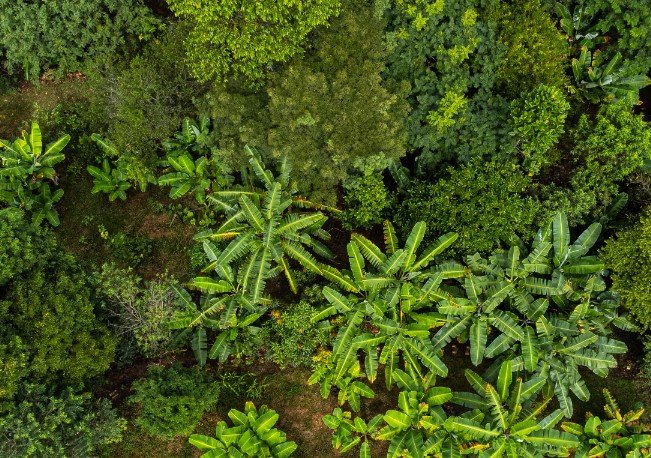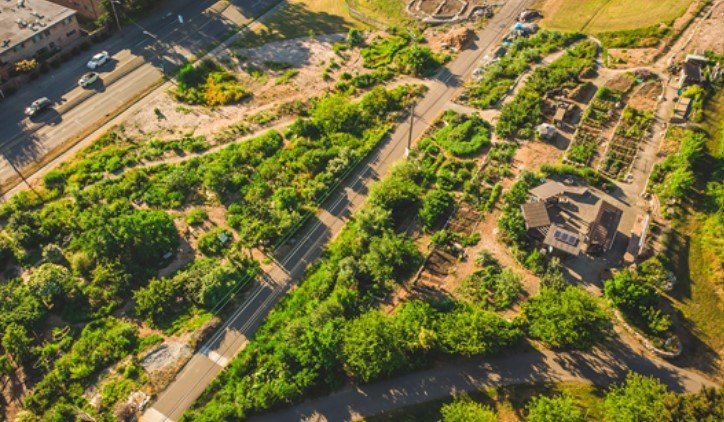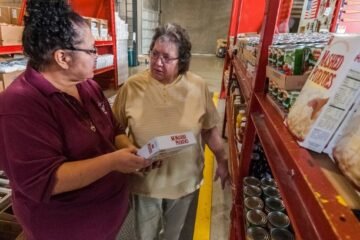As the climate crisis worsens, many cities are facing the challenges of extreme heat and food insecurity. One possible solution is to plant urban food forests, which are community spaces where people can enjoy shade and harvest fruits, nuts, herbs, and vegetables for free.

What are urban food forests?
Urban food forests are a type of agroforestry, which combines trees and crops in a mutually beneficial way. Unlike conventional orchards or gardens, urban food forests mimic natural ecosystems and have multiple layers of vegetation, such as canopy trees, shrubs, vines, groundcovers, and root crops. They also include plants that attract pollinators, birds, and beneficial insects, creating biodiversity and resilience.
Urban food forests can provide a range of benefits for cities and their residents, such as:
- Reducing the urban heat island effect, which occurs when buildings, roads, and other surfaces absorb and radiate heat, making cities warmer than their surroundings. Trees and plants can lower the temperature by providing shade, evapotranspiration, and albedo (reflecting sunlight).
- Improving air quality and carbon sequestration, as trees and plants filter pollutants, dust, and noise and capture carbon dioxide from the atmosphere.
- Enhancing food security and nutrition, urban food forests offer a source of fresh, local, and diverse food that is accessible and affordable for everyone, especially low-income and marginalized communities.
- Promoting social and cultural values, urban food forests create opportunities for education, recreation, and community engagement, as well as preserving and celebrating traditional and indigenous knowledge and practices.

Where are urban food forests being planted?
Urban food forests are not a new concept, but they have gained popularity and support in recent years. Many cities around the world have launched or planned urban food forest projects, such as:
- Tucson, Arizona, where the city government has pledged to plant 1 million trees by 2030, received $5 million from the Biden administration to support the initiative. One of the projects is to plant velvet mesquite trees, which are native to the Sonoran Desert, and produce edible seed pods that can be ground into flour. The project is led by the Community Food Bank of Southern Arizona, which aims to address both heat and hunger on the city’s south side, where many residents live in food deserts and face high temperatures.
- Red Deer, Alberta, where the city has planted eight community orchards and food forests since 2011, with the help of schools and community groups, The food forests feature a variety of fruits and nuts, such as haskap berries, cherries, apples, plums, hazelnuts, and walnuts, that are available for public harvesting. The city hopes to inspire more people to grow their food and learn about local food systems.
- Duncan, British Columbia, where the Cowichan Green Community Food Forest covers about one acre of land in the city center and offers a bounty of fruits, vegetables, herbs, and flowers. The food forest is managed by the Cowichan Green Community Society, an environmental group that focuses on food security. The society uses the harvest for its Meals on Wheels program for seniors and sells some at its reFRESH Store, which rescues surplus and potentially wasted food.
- Paris, France, where the city plans to create 30 hectares of urban agriculture by 2030, including food forests, One of the projects is the Parc de la Villette, which will host a 2.5-hectare food forest with more than 100 species of plants, such as figs, grapes, almonds, and artichokes. The food forest will be open to the public and will also involve local schools, associations, and social enterprises.
How can urban food forests be successful and sustainable?
Urban food forests are not without challenges, such as land availability, water scarcity, pest management, maintenance, and vandalism. To overcome these barriers, urban food forest practitioners and advocates suggest some best practices, such as:
- Engaging and empowering the community by involving them in the design, planting, harvesting, and stewardship of the food forest and ensuring that their needs, preferences, and values are respected and reflected.
- Adapting to the local context by choosing plants that are suitable for the climate, soil, and water conditions and that are culturally and ecologically appropriate. Some food forests also incorporate native and traditional plants that have historical and medicinal significance.
- Educating and raising awareness by providing information, signage, workshops, and events that teach people about the benefits, functions, and uses of the food forest and how to harvest and process the food safely and respectfully.
- Collaborating and networking by partnering with local governments, organizations, businesses, and institutions that can provide funding, land, expertise, and support for the food forest and by sharing experiences and lessons learned with other food forest initiatives.
Urban food forests are a promising way to transform urban spaces into green, productive, and resilient landscapes that can cool down and feed cities. By following the principles of agroforestry and community participation, urban food forests can create a win-win situation for people and the planet.






